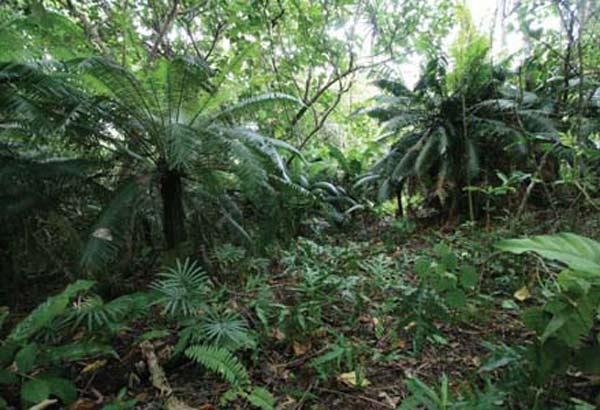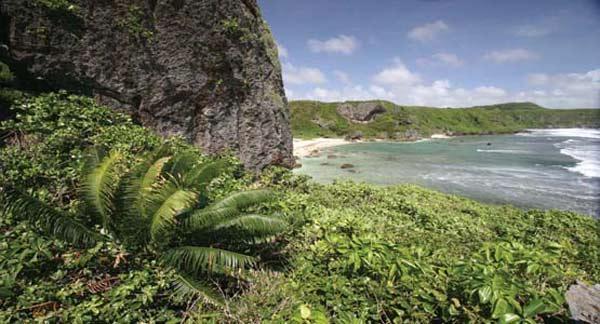
Forensic Tools May Help Save 'Living Fossil' Plants

When dinosaurs went crashing through lush, primordial landscapes millions of years ago, some of the plants they trampled were cycads. Those ancient plants are still around today, though barely hanging on, and scientists are working to make sure these living fossils don't disappear.
Cycads are simple plants that have been on Earth for nearly 300 million years. Found largely in tropical areas, cycads are a type of gymnosperm plants with relatively exposed seeds.
On the island of Guam, the modern-day descendents of ancient cycads are threatened by an invasive burrowing insect that is decimating the cycad population, killing off nearly 90 percent of the western Pacific island's plants in just four years.
Now scientists are using tools similar to those used in a crime lab to identify genetic variations within individuals of Guam's cycad species (Cycas micronesica), in an attempt to spot slight differences in the island's populations before they disappear and perhaps bring the plant back from the brink of extinction .
"It's the same tool that forensic biologists use to do DNA fingerprinting of humans, just being used in a new way," said Rob DeSalle, of the American Museum of Natural History (AMNH) in New York and the Sackler Institute for Comparative Genomics. "It's been around for a while, but it's never been applied to cycads."
Angélica Cibrián-Jaramillo, a researcher at AMNH and The New York Botanical Garden, said this forensic technique has allowed scientists to identify biological differences within C. micronesica with unprecedented speed, which is important if the species is to survive Guam's cavalcade of pests.
In addition to the plague of parasitic insects, humans, feral pigs and even butterflies are killing off the primeval plants.
Sign up for the Live Science daily newsletter now
Get the world’s most fascinating discoveries delivered straight to your inbox.

DeSalle said that identifying genetic variation among the island's cycads will hopefully help authorities design unique defenses for each cycad population.
"It gives us a tool to go out into the wild where these things are found and say, 'This group is different from this group, which is different from this group.' And once we have that in hand, we can tell people who are managing the forest which parts of the forest they need to pay attention to," DeSalle said.
The effects of the scientists' genetic detective work may well extend far beyond Guam's small confines and the rescue of cycads. Their techniques could be used to help save other plant species under attack from alien invaders .
"We hope that these results will fit into the management of invasive insects in general, which is one of the most important drivers of biodiversity loss worldwide and very costly economically," DeSalle said.
Cibrián-Jaramillo and DeSalle's findings are published in a recent issue of the journal Molecular Ecology.










